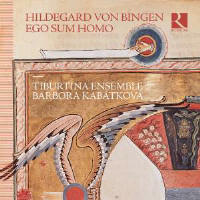Texte paru dans: / Appeared in: |
|
|
Outil de traduction ~ (Très approximatif) |
|
|
Reviewer: Barry
Brenesal
Several musician friends of mine active on the regional early music scene have insisted in discussion that one of its great draws is the interpretive freedom. That’s not to say they believe anything goes, but that once the available knowledge of the period, place, instruments, theories, styles, and everything pertinent to the music has been absorbed, you’re relatively free to interpret a raft of compositions that were never conceived with an Urtext edition in mind. It is, of course, possible to lose the thread, to become intoxicated by an anachronistic approach because of the sound it produces, or how it promotes one’s personal theories, or the way it brings quick popularity with audiences otherwise uncaring about broader issues of transmission or musica ficta. But within established cultural parameters, there’s a great many options available. There’s even more if you deliberately cross the invisible lines and try to make something new. This album of works by Hildegard von Bingen sets out to explore these possibilities, and states that admirably up front. “Hildegard’s music beckons to be experimented with.” Perhaps, perhaps not; but its performers set about doing this through improvised accompaniment to Hildegard’s monophonic chants on plucked strings, including harps and a dulce melos. (The latter is a reconstructed instrument, similar to a hammered dulcimer, but with the hammers striking keys attached to the strings.) In some cases it works well, such as O Jerusalem, aurea civitas, Cum vox sanguinis, O, tu illustrata, and Caritas abundat (the last treated as an instrumental). The stylistic matchup between chant and instrumentals is quite close, or at least suggests St. Martial polyphony. In others, such as O quam mirabilis est, the instrumental accompaniment employs figures and harmonic relationships typical of later points in medieval musical history. This isn’t to say that such juxtapositions never occurred. So much music has been lost, and so little was ever transcribed during this period, especially outside of the great cathedrals. Contra Hoppin, European polyphonic music didn’t originate in churches, but with people raised in courts, cities, and small farming hamlets, who formed a continuous human stream feeding into church communities. Whatever musical sensibilities they brought with them interacted with the order’s rules and its current personalities to create something which might prove very different from the musical uniformity of later years—as the broad survey of styles in the Mass of Barcelona suggests. That extremely little of this music from outside the churches survives today doesn’t mean attempts to reproduce it should be ignored, and while the results sound mildly out of sync to me, Barbora Kabátková handles these matters with great taste and attention to timbre. When we reach the anonymous polyphonic works on the album, we move to a different plateau of artistic creation. The conductus Praemii dilatio is given a stylishly appropriate treatment, but Flos in monte cernitur acquires harmonies appropriate to more modern times as soon as the female choir joins its initial instrumentals. Both it and a third conductus, Deus misertus hominis, sound like modern choral arrangements based on the expert transformation of original textures and note values. The interaction between first content and latter-day changes wrought upon it—sometimes venturing suddenly back in time, before as suddenly moving forward again—is handled cleverly. The nine voices, two harps, and dulce melos of the Tiburtina Ensemble are all managed expertly. This is not an album I’d recommend to those seeking their first CD of Hildegard’s music, or in fact any album by her. It steps outside the boundaries, but it does so intelligently and always to interesting effect. In excellent sound, this comes recommended. | |
|
Support us financially by purchasing this disc from eiher one of these suppliers. Un achat via l'un ou l'autre des fournisseurs proposés contribue à défrayer les coûts d'exploitation de ce site. |
|
|
|
|
|
Cliquez l'un ou l'autre
bouton pour découvrir bien d'autres critiques de CD |
|




